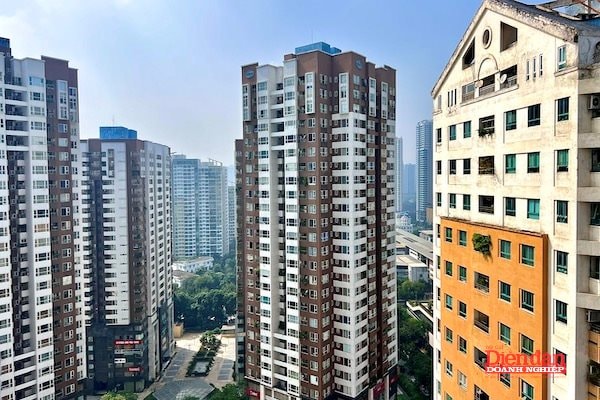Hanoi apartment prices surge, making housing even harder to afford
Apartment prices in Hanoi continue to soar, especially in near-central districts, making the city’s housing challenge increasingly difficult.

In 2025, Hanoi’s condominium market has once again recorded strong price growth across many areas. Data from Batdongsan.com.vn shows that interest in this segment has begun to recover, and asking prices continue to rise—though at a slower pace of 13%, compared with a 39% increase in 2024.
Prices Surge, Fears of a Market “Peak” Rise
In Q3 2025, apartment prices were up 95% compared with Q1 2023. The high-end segment in Ba Dinh and Tay Ho recorded common price ranges of VND 130–210 million per square meter. As a result, more than half of surveyed respondents said that current apartment prices are out of reach.
Meanwhile, the affordable–mid-range segment (under VND 55 million/m²) has shown exceptional price growth—rising 57–71% versus Q1 2024—while also maintaining the best rental yields. Supply and demand are visibly shifting toward districts such as Dong Anh, Gia Lam, and Long Bien.
Notably, by the end of Q3 2025, several areas recorded extremely high apartment prices. Dong Anh reached VND 72 million/m² (up 99%); Thanh Tri hit VND 59 million/m²—up an astonishing 119%, the highest in the market. These were followed by Ha Dong (up 108%), Hoang Mai (102%), and Gia Lam (114%). Even inner-city districts like Dong Da, Thanh Xuan, and Cau Giay saw increases of around 100%.
Nguyen Quoc Anh, Deputy CEO of Batdongsan.com.vn, said that despite strong price increases, liquidity in the apartment market remains high. However, the rapid price escalation has significantly affected market sentiment. “Hanoi apartment prices are rising too quickly, leading many investors to worry that the market may be reaching its peak,” he noted.
Cooling Expected as New Supply Comes In
Experts say the main issue is limited supply, with most new developments concentrated in the high-end segment. Pham Duc Toan, CEO of EZ Property, shared that lowering housing prices requires addressing the root cause—boosting supply. Recently, Hanoi resolved procedural bottlenecks for 298 commercial housing projects, meaning many developments will begin construction soon. As supply increases sharply from 2026 to 2027, apartment prices are expected to fall. Once supply is no longer dominated by a handful of major developers, pricing competition will emerge, benefiting genuine homebuyers.
In parallel, expanding social housing in gateway areas of the capital is also considered a key lever to cool down prices. If projects progress on schedule, housing prices in Hanoi could fall by 30–40% from current levels.
In the long term, infrastructure development and improved connectivity between satellite towns and the urban core will also be essential in reducing housing costs. Le Hoang Chau, Chairman of the Ho Chi Minh City Real Estate Association, emphasized that the Government should issue a standardized process for commercial housing development to shorten administrative procedures and resolve legal obstacles for real estate projects, thereby increasing housing supply.
Additionally, Mr. Chau urged real estate developers to reduce profit expectations and adopt more flexible pricing strategies, discounts, and promotions to stimulate demand, generate cash flow, and improve liquidity in the market.








